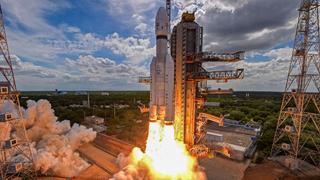Amsterdam-based Philips, a technology company with interests in areas of healthcare, consumer lifestyle and lighting, is betting big on new technology solutions such as the Internet of Things (IoT), or devices connected to the World Wide Web. Srinivas Prasad, the CEO of the Philips Innovation Campus (PIC) in Bangalore, spoke to BusinessLine on the company’s growth plans for India, its localisation strategy and the new challenges. Edited excerpts:
How has the growth been at the PIC and how do you see it going ahead?
We are close to about 2,300 people, we have grown at a CAGR (compound annual growth rate) of 20 per cent in the last three years or so. At this point, given the visibility we have, we have a lot more than we can chew. The current challenge I have is the problem of plenty. The retention levels at PIC are one of the best in the industry, and attrition is in low single digits.
How did you achieve that?
Unlike many others, we are not just a back office. If you see, we are building something in the front, which in our case is the consumer experience centre (for Philips, products such as music systems, coffee makers, etc.). Also, there is a lot of localisation involved in all of our products as without that we do not see value for consumers in this market. All this has resulted in steady growth and that is reflected in the new building that is coming up. In the next three-five years, we will continue to grow at a faster pace.
Since the last few years, Philips has changed business tracks by getting into new areas. How is that journey going?
It’s challenging to some extent, but that challenge presents a huge opportunity.
We are the hub in the digital innovation journey, in the making of the Internet of Things, in providing a platform where you can help in touching people’s lives, which is Philips’ mission.
Our mission is to touch the lives of three billion people by 2025. When you say touch a life of a person, you can touch him through- lighting and healthcare, and this PIC campus is one of the main hubs that is helping in this digital revolution across Philips, across industries.
For the first time, there seems to be a concerted effort to look at all three divisions (consumer, lighting and healthcare)...
Earlier, Philips was into consumer electronics, semi-conductor, healthcare and lighting. All the centres were at different locations. But with the Internet, collaboration is the name of the game. Now, if you see the trend of the last 25 years, it is about connecting people to people or people to an app or people to information.
But the new avatar of internet is going to be the Internet of Things, where you will be connecting people to the physical world, through sensors that measure environment. We will also focus on health-related sensors.
These sensors are external to the body or the ones embedded in the body whereby information from all sources will be looked at in real time. This will generate a lot of data, which once analysed in real time will help informed decisions.
Connecting devices and making decisions out of the information present its own challenges…
Yes, for example, the sensors catch all available data and send it to data store or database.
The amount of data being envisaged today or by 2020 is close to one Zettabyte (1 followed by 17 zeros). So the magnitude is huge and when you are looking at data as a source to improve service quality, decision and support making, you need a very solid tech infrastructure.








Comments
Comments have to be in English, and in full sentences. They cannot be abusive or personal. Please abide by our community guidelines for posting your comments.
We have migrated to a new commenting platform. If you are already a registered user of TheHindu Businessline and logged in, you may continue to engage with our articles. If you do not have an account please register and login to post comments. Users can access their older comments by logging into their accounts on Vuukle.